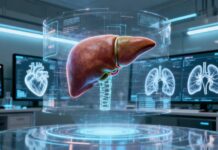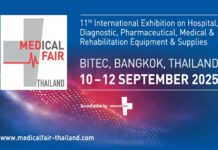Traumatic Brain Injuries (TBI) are detrimental as they endanger victims’ lives physically, emotionally, or cognitively. In personal injuries, when brain injuries appear in the causative context, evidence related to that injury attracts the foremost attention in the lawsuit.┬Ā
Whether as victims, a lawyer, or an insurance adjuster, grasping the essence and ways of medical evidence helps shape navigating through these disputes.
The Importance of Medical Evidence
Medical evidence is the foundation of a TBI lawsuit, supportive of establishing the existence of an injury, its linkage with the injury incident, and the extent of damage to the victim’s existence.┬Ā
Hiring an expert St. Louis brain injury lawyer will make collecting the evidence easier. They can help you in the evidence-collection process. Key reasons medical evidence is vital include:
Demonstrating Causation
It is vital to show that the injury directly resulted from the event being dealt with for liability to attach.┬Ā
This usually requires the contribution of a myriad of carefully constructed medical expert testimony, witness testimony, and accident reconstruction reports to connect the traumatic event with the injury to the brain. In some cases, examination of medical records predating the incident has been to rule out previous medical conditions.
Assessing Damages
Medical evidence will help determine anticipated medical costs, lost income, pain and suffering, and necessary long-term care. Projections by occupational therapists, life care planners, and economic analysts may include various components to conclude financial loss during the victim’s lifetime, such as home modifications and equipment for assistance, in-home care services, and other things.
Validating Non-Economic Damages
Psychiatric evaluations and therapy records can also substantiate emotional upset, loss of enjoyment of life, and mental anguish. Testimony from mental health professionals, alongside journals kept by the victim detailing their emotional state and daily struggles, adds depth to non-economic damage claims. Family members’ testimonies regarding changes in the victim’s personality and relationships further substantiate these claims.
Proving the Injury
Medical records, imaging scans (such as CT or MRI), and expert testimony confirm the presence and severity of the injury. Detailed records of emergency room visits, hospitalization, and neurological assessments create a strong basis for demonstrating the initial injury.┬Ā
Advanced imaging technologies like diffusion tensor imaging (DTI) can reveal subtle brain abnormalities that traditional scans might miss, providing additional evidence.
Types of Medical Documentation┬Ā
Medical evidence of a TBI lawsuit may include the following:
- Medical Records and Reports include hospital records, doctor notes, emergency room reports, neurologists, psychologists, and physical therapist reports.
- Imaging and Diagnostics consist of CT, MRI, and PET scans as objective evidence for brain aberrations.
- Neuropsychological Testing refers to cognitive and emotional deficits assessment following the injury.
- Expert testimony may include evidence from neurologists and rehabilitation specialists relating to the type and consequences of the injury.
- The Victim could write down logs of complaints and behaviors, including how their quality of life has changed since their injury.
- Testimonies from Family Members and Caregivers: Observations made by or on behalf of the very close family or caregivers may add to the picture of what the victim faces daily-wise through hardships and limitations.
Endnote
In every TBI suit, medical proof is the backbone of evidence that sustains the injury, shows causation, and closes with fair compensation. Well-documented and decisive medical reports will serve as a shield in favor of a victim and an idea of fairness in the distribution of justice.┬Ā
Realizing the pivotal role of medical evidence, all parties carrying the case will aid the case of TBI more readily, thus favoring the parties affected by the grievous injuries.┬Ā














